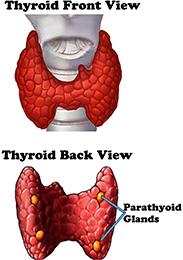
Parathyroid disorders can be a complex topic. These disorders involve small glands in your neck that play a crucial role in your body’s calcium regulation.
Understanding these disorders is vital. They can significantly impact your health and quality of life if left untreated.
In this article, we delve into the world of parathyroid disorders. We’ll explore their causes, symptoms, and the available treatment options.
Whether you’re seeking information for yourself or a loved one, or you’re simply interested in endocrinology, this guide is for you.
Our aim is to provide comprehensive, easy-to-understand information. We hope to guide those experiencing symptoms towards seeking medical advice.
Understanding Parathyroid Gland Disorders
Parathyroid gland disorders are medical conditions that affect the parathyroid glands. These disorders can disrupt the balance of calcium in your body.
This disruption can lead to a range of health issues. These include kidney stones, osteoporosis, and even certain types of heart disease.
What Are the Parathyroid Glands?
The parathyroid glands are four tiny glands in your neck. They are located behind the thyroid gland.
These glands are part of your endocrine system. They produce and release a hormone called parathyroid hormone (PTH).
The Role of Parathyroid Hormone (PTH)
Parathyroid hormone, or PTH, plays a crucial role in your body. It helps regulate the levels of calcium and phosphorus in your blood.
When the levels of these minerals are too low or too high, PTH is released or withheld. This helps keep your body’s mineral balance in check.
Common Types of Parathyroid Disorders
There are two main types of parathyroid disorders. These are hyperparathyroidism and hypoparathyroidism.
Both disorders involve an imbalance in the production of parathyroid hormone. This imbalance can lead to serious health problems if left untreated.
Hyperparathyroidism
Hyperparathyroidism occurs when the parathyroid glands produce too much PTH. This can lead to high levels of calcium in the blood.
High calcium levels can cause a range of symptoms. These include bone pain, kidney stones, and fatigue.
In severe cases, hyperparathyroidism can lead to complications like osteoporosis and kidney damage.
Hypoparathyroidism
Hypoparathyroidism, on the other hand, is when the parathyroid glands do not produce enough PTH. This results in low levels of calcium in the blood.
Low calcium levels can cause symptoms like muscle cramps and spasms. Tingling in the fingertips, toes, and lips is also common.
If left untreated, hypoparathyroidism can lead to serious complications. These include heart problems and seizures.
Symptoms and Causes of Parathyroid Disorders
Parathyroid disorders can cause a range of symptoms. These symptoms can vary depending on whether the disorder is hyperparathyroidism or hypoparathyroidism.
Understanding the symptoms and causes of these disorders is crucial. It can help in early detection and treatment, preventing serious complications.
Recognizing the Symptoms
The symptoms of parathyroid disorders can be subtle. They can often be mistaken for other conditions.
For hyperparathyroidism, symptoms may include:
- Bone pain
- Kidney stones
- Excessive urination
- Fatigue
Hypoparathyroidism, on the other hand, may cause:
- Tingling in fingertips, toes, and lips
- Muscle cramps
- Spasms
Exploring the Causes
The causes of parathyroid disorders can vary. They often involve issues with the parathyroid glands themselves.
For instance, benign tumors on the parathyroid glands can cause hyperparathyroidism. Genetic factors can also play a role in both hyperparathyroidism and hypoparathyroidism.
Diagnosing Parathyroid Disorders
Diagnosing parathyroid disorders involves a series of tests. These tests aim to measure the levels of certain substances in the body.
These substances include calcium, phosphorus, and parathyroid hormone (PTH). Their levels can indicate whether the parathyroid glands are functioning properly.
Diagnostic Tests and What They Mean
There are several tests used to diagnose parathyroid disorders. Each test provides different information about the body’s calcium regulation.
Common diagnostic tests include:
- Blood tests: These measure the levels of calcium, phosphorus, and PTH in the blood.
- Urine tests: These can help determine how much calcium is being removed from the body.
- Imaging tests: These can help identify any abnormalities in the parathyroid glands.
Understanding these tests and what they mean is crucial. It can help patients better understand their condition and treatment options.
Treatment Options for Parathyroid Disorders
Treatment for parathyroid disorders depends on the type and severity of the disorder. The goal is to restore the balance of calcium and phosphorus in the body.
Both surgical and non-surgical treatments are available. The choice of treatment depends on the patient’s overall health, the severity of the disorder, and the patient’s personal preferences.
Surgical Treatments
Surgery is often the first line of treatment for hyperparathyroidism. The procedure, known as parathyroidectomy, involves removing the overactive parathyroid glands.
This surgery is usually successful in curing hyperparathyroidism. However, like all surgeries, it carries some risks and potential complications.
Non-Surgical Treatments
Non-surgical treatments are often used for hypoparathyroidism. These treatments aim to manage the symptoms and maintain normal calcium and phosphorus levels.
These treatments may include calcium and vitamin D supplements. In some cases, synthetic parathyroid hormone may be prescribed. Regular monitoring and follow-up are crucial to ensure the effectiveness of these treatments.
Living with Parathyroid Disorders
Living with a parathyroid disorder can be challenging. However, with the right treatment and lifestyle changes, most people can manage their symptoms and lead a normal life.
It’s important to remember that everyone’s experience with parathyroid disorders is unique. What works for one person may not work for another.
Lifestyle Changes and Management
Managing a parathyroid disorder often involves making certain lifestyle changes. These changes can help manage symptoms and improve overall health.
- Regular exercise can help strengthen bones and improve overall health.
- A diet rich in calcium and vitamin D can help maintain healthy calcium levels.
- Regular check-ups and blood tests are crucial to monitor the condition and adjust treatment as needed.
Remember, it’s important to discuss any lifestyle changes with your healthcare provider before starting them. They can provide guidance based on your specific condition and needs.
Conclusion and Next Steps
Understanding parathyroid disorders is the first step towards managing them effectively. With the right information, you can make informed decisions about your health.
Remember, if you suspect you have a parathyroid disorder, seek medical advice from Dr. Ian Behr. Early detection and treatment can significantly improve your quality of life.
